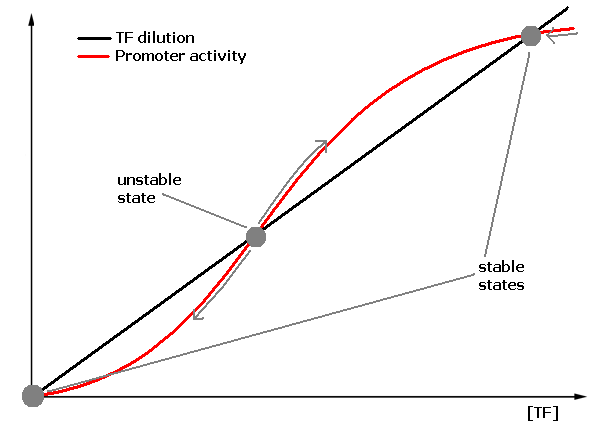Team:Groningen/project memory units
From 2011.igem.org
Memory Units
As memory units, we are using bistable autoinducing loops that can be suppressed via a reversed antisense promoter (jammer). The autoinducing loop will act as an amplifier of the input signal with the promoter inducing expression of its own transcription factor. To switch off the loop, we adopted the endogenous device from the 2009 iGEM team of British Columbia, which implemented a reverse antisense promoter downstream of the coding sequence (https://2009.igem.org/Team:British_Columbia/Jammer).
Our implementation
The first memory unit is based on a modified lambda Prm promoter (BBa_I12006) producing its own inducer cI. By means of the reversed antisense lasB promoter it will be repressed in the presence of LasR. The second memory unit consists of the lasB promoter (BBa_R0079) producing its own induction factor LasR. Both autoinducing loops can be repressed by an arabinose inducible reverse antisense pBAD promoter. The transcription factor genes (cI and LasR) were fused in various combinations with different RBS and degradation tags, resulting in 12 different construct variants. These enable us to study the dynamics of expression and half-life of different autoinducing loop variants in order to subsequently determine the constructs that best meet the criteria for bistability.
Experimental Planning
First, we want to test promoter leakage by cotransforming a plasmid containing the autoinducing loop and a reporter plasmid under the control of an appropriate promoter. Second, we will cotransform assembled input and output systems with plasmids bearing various variants of autoinducing loops. These constructs will provide us with information about memory unit behavior in time. Finally, integration of experimental data in our model will allow us to fine-tune the expected system behavior.
 "
"




